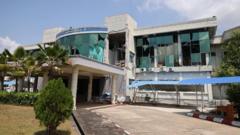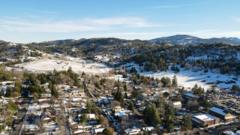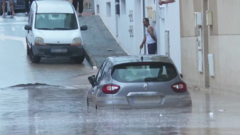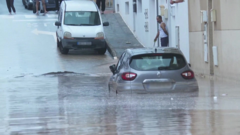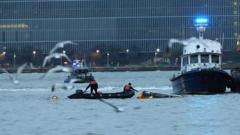Santorini has declared a state of emergency due to consecutive earthquakes, most notably a magnitude 5.2 tremor, prompting thousands to evacuate. While no major damage has been reported, authorities are on high alert and taking precautions against potential larger seismic activity.
Santorini Declares State of Emergency Amid Ongoing Earthquakes
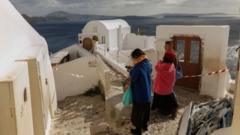
Santorini Declares State of Emergency Amid Ongoing Earthquakes
The Greek island of Santorini faces a state of emergency following a series of earthquakes, raising concerns among residents and visitors.
A state of emergency has been enacted on the picturesque island of Santorini in Greece as the region endures a sustained series of earthquakes. The situation escalated recently with the recording of a magnitude 5.2 quake at 21:09 local time on Wednesday, the strongest in a series of tremors that have left residents and visitors feeling uneasy. This tremor, originating at a depth of 5 kilometers, is part of a pattern that includes over 57 quakes in just a few hours earlier that morning.
Officials have stated that the state of emergency will remain in place until 3 March, allowing them to address urgent needs and manage the growing consequences of the seismic activity. Already, more than 11,000 individuals have evacuated the island, with approximately 7,000 travelling by ferry and an additional 4,000 seeking out air transport. Although officials stress that no significant infrastructural damage has been noted thus far, contingency plans are being made in anticipation of a potentially more powerful earthquake.
Greek Prime Minister Kyriakos Mitsotakis is slated to visit Santorini on Friday to assess the situation firsthand. According to Vasilis Karastathis, the director of the Geodynamic Institute, the seismic activity remains at a concerning intensity with no notable reduction in frequency, indicating that the island is still amidst a significant seismic event.
Santorini, a major tourist destination infamous for its stunning views, is currently experiencing a low season, meaning that most of the evacuees are local residents rather than tourists. In light of the emergency, local officials have been granted permission to bypass regular bureaucratic protocols, which will enable rapid repairs to key infrastructures such as roads and ports.
Experts are voicing caution about the potential for a larger seismic event and have expressed fears about possible volcanic activity stemming from the island's complex geological landscape. Extra resources, including generators and backup communication equipment, have been dispatched to ensure safety and preparedness. Temporary tsunami defenses made of sandbags have also been erected along vulnerable coastal areas, highlighting community concerns about potential tidal waves in the aftermath of the quakes.
Healthcare staff are on high alert, with hospitals ready to assist those who remain on the island, while additional emergency services, including police and military personnel, have been dispatched to enhance safety measures. The adverse weather has compounded evacuation efforts, as some ferry routes have been suspended, further complicating travel plans for those looking to leave.
Schools across Santorini and its neighboring islands remain closed until further assessments can be made. The Thira Chamber of Commerce has called for a halt to local business operations, echoing measures previously taken during the COVID-19 pandemic.
As the nation grapples with these geological challenges, authorities continue to emphasize collective cooperation among islanders to ensure their safety amid ongoing uncertainties regarding the seismic landscape. While the island of Santorini has a long history of volcanic activity, the recent quakes are attributed to tectonic plate movements rather than volcanic eruptions, though scientists recognize the region's susceptibility to earthquakes due to its geological characteristics.

